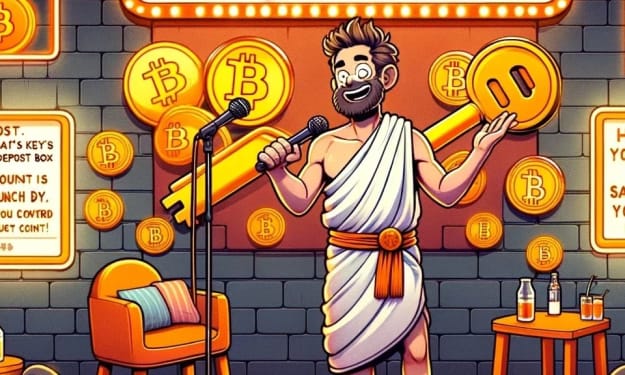Types of NFTs (Non-Fungible Tokens) You Didn’t Know
Published by: Oodles Blockchain

NFT development services offer a plethora of potential uses for NFTs. However, the non-fungible era is still in its early stages. It might be some time before we see significant projects that aren't connected to art in some manner. To this purpose, there are the following types into which NFT projects commonly fall.
Types of NFTs
Intelligent NFT
An AI NFT or intelligent NFT is essentially an NFT token that has a Generative Pre-trained Transformer 3 (GPT-3) language model prompt incorporated as part of its smart contract. This is one of the types of NFTs that have artificial intelligence. But it also features animation, interactivity, and numerous other generating skills that are still being developed.
An intelligent NFT is capable of self-learning. For instance, it enables it to independently produce new information and incorporate dynamic experiences into its smart contact.
The more an NFT interacts with a particular environment or user, the more data it can gather and knowledge it can accumulate.
As a result, these tokens are scalable, upgradeable, and dynamic in addition to being intelligent. Imagine an NFT that can respond to your moods and discussions while also evolving with you to produce tokens that are ever more complicated.
Dynamic NFT
Simply put, a dynamic NFT is one that may alter in response to environmental factors. Changes in a dynamic NFT frequently refer to metadata changes brought on by smart contracts. This is accomplished by encoding automated modifications in the NFT smart contract, which instructs the underlying NFT on how and when to update its metadata.
In addition to metadata updates, dynamic elements can also exist.
For instance, based on specific circumstances, such as when a hidden place is discovered in an augmented reality application, dynamic NFTs can be created.
Additionally, "hidden traits" exhibited through user interactions as opposed to metadata can be stored in dynamic NFTs.
These types of NFTs can be programmed in countless different ways because they are completely unique and programmable tokens.
However, in order for non-technical users to "see" the changes, the majority of dynamic NFTs must implement some kind of metadata change.
Rentable NFT
The creation of a new Ethereum token standard dubbed ERC-4907, which will enable users to lend out their non-fungible token, has entered its final phases.
In the NFT standard, ERC-4907 introduces a new role by separating the roles of owner and user, enabling "renting."
The NFT can be used by the renter up until the loan time expires, at which point it is immediately returned to its owner.
Utility NFT
Utility NFTs improve the idea of digital collectibles by giving owners access to real-world benefits and other ownership-related privileges. NFTs can be used for a variety of practical purposes apart from just being collectible works of art, such as serving as a ticket to an event or granting the possessor lifetime membership to a club.
Some NFT ventures, such as Bored Ape Yacht Club (BAYC) and Doodles, started off as PFP artwork. They later started to provide holders benefits like exclusive admission to branded events or meetups.
Other NFT products, like Coachella Collectibles, which offers lifetime access to the music festival along with other perks like exclusive on-site events and tangible goods, start out with usefulness.
Phygital NFT
Physical and digital components will be combined to create an experience with phygital NFTs. With a twist, these tokens can stand in for conventional physical commodities like artwork or antiques.
NFTs' permanent record of ownership and legitimacy will exist both in the real world and on a blockchain. Therefore, collectors can enjoy the best of both worlds by owning and storing their tokens both physically and online.
The way we buy and trade actual commodities could potentially be completely changed by this new type of non-fungible tokens.
With blockchain, they are more secure in comparison to conventional means of purchasing and selling products because. No one can steal or counterfeit them.
Additionally, non-fungible tokens might offer stronger authentication, giving collectors confidence in the legitimacy of the tokens they are purchasing.
Phygital NFTs provide a stronger sense of ownership and connection to actual items in addition to being more secure.
The ability for users to preserve their tokens physically and digitally might give them a special sense of ownership.
These digital tokens can also forge a deeper bond with the tangible things they represent. They can do so by providing access to view digital information about their assets, such as their provenance and history.
You may also like | NFT Marketplace Development for the Digital Age
Conclusion
These types of NFTs give a clear picture of the NFT ecosystem's potential. NFTs, a brand-new class of digital or tokenized assets, are upending accepted ideas of asset ownership and usage. There is something for everyone in the world of NFTs thanks to the various types of NFTs, each with distinctive features and advantages.
If you have a project in mind related to any of these types of NFTs or want more information about NFTs, connect with our skilled blockchain and NFT developers.
#NFTDevelopment, #NFTDevelopmentCompany, #NFTDevelopmentServices, #NFTDevelopmentSolutions, #HireBlockchainDeveloper, #HireBlockchainDevelopmentCompany,





Comments
There are no comments for this story
Be the first to respond and start the conversation.